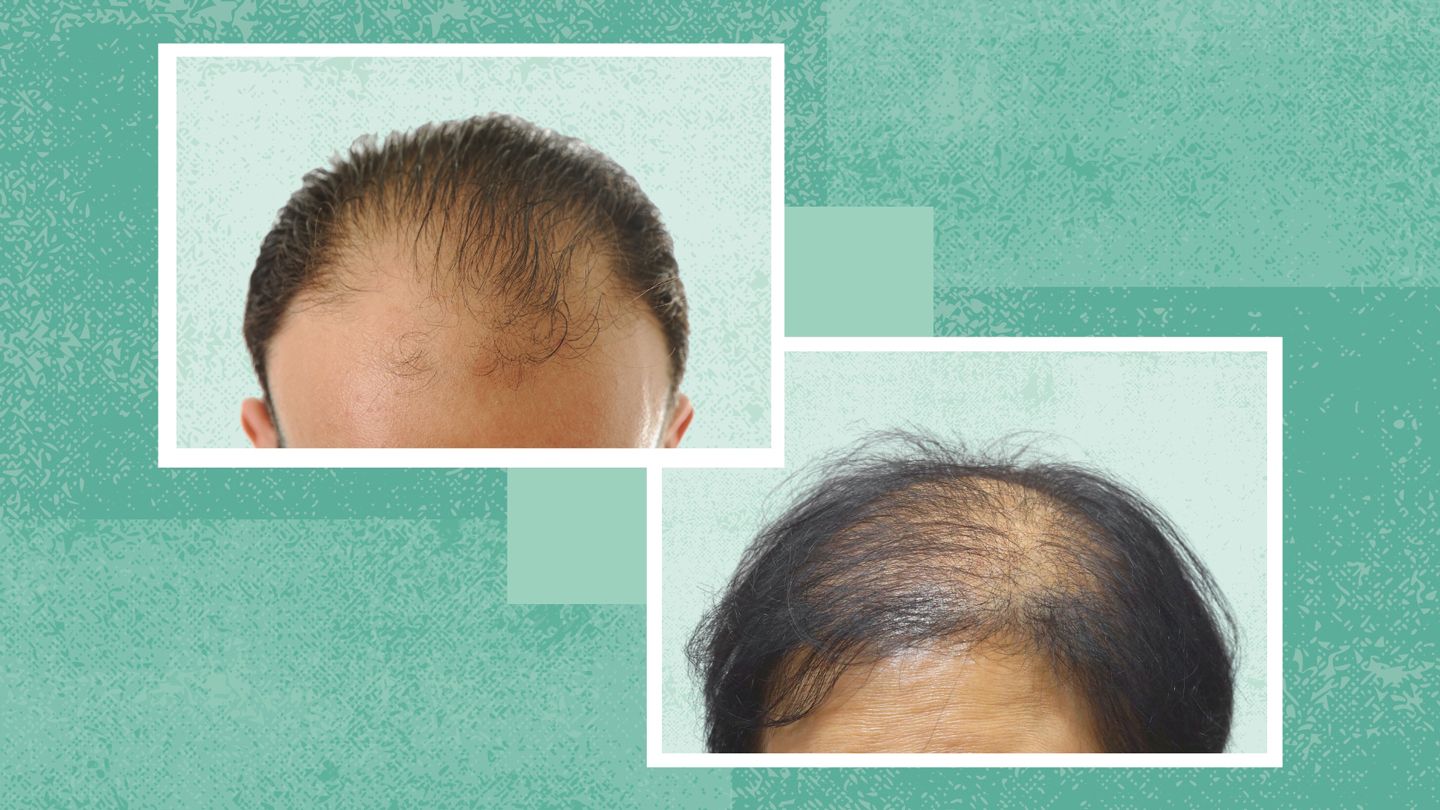3. Hair Loss Is Linked to Different Health Conditions in Men and Women
Genetics — specifically, the androgen receptor gene — plays a major role in male and female hair loss. If you have a variation in this gene, your hair follicles are more sensitive to an androgen called dihydrotestosterone (DHT), which is a derivative of testosterone. Higher levels of DHT lead to thinner and shorter hair follicles (the tubelike structures that produce strands of hair), which may eventually stop growing hair altogether.
4. Going on Testosterone Replacement Therapy May Promote Hair Loss in Men
One potential side effect of TRT is hair loss on your head. “I often ask my patients who come into my office with androgenetic alopecia if they are taking any [supplemental] testosterone,” says Browning. Other signs may be the new development of acne or oilier-than-normal skin. The higher your testosterone levels, the more testosterone will be converted into DHT, which can cause the hair follicles to shrink and lead to hair loss. If you are on TRT, make sure your T levels are monitored closely by a healthcare professional.
5. Men and Women May Receive Different Treatment Recommendations
6. Men’s and Women’s Experiences With Hair Loss Differ
Even though hair loss affects both men and women, women may deal with more stigma from it. “Androgenetic alopecia presents earlier in life for most men, compared to women,” says Kristen Lo Sicco, MD, a dermatologist at NYU Langone Dermatologic Associates in New York City. So, “Society often expects men to have hair loss at some point. … As a result, many men experiencing hair loss may not receive unsolicited comments regarding their health.”
That’s not to say hair loss doesn’t affect men’s confidence. It absolutely can, she says, and could take a toll on both their personal and professional lives. But hair loss can be more serious for women, who may be asked more personal questions, such as whether they have cancer.
The beauty of a woman can sometimes be defined by her hair, says Ken L. Williams Jr., DO, a surgeon and the founder of Orange County Hair Restoration in Irvine, California. He treats more women than men. When hair loss happens to a woman, it can be devastating, he says.
Whether you’re a man or a woman, it’s important to know who you are, says Dr. Williams. “We are not defined by our appearance but who we are emotionally and spiritually.”
The Takeaway
- Androgenetic alopecia affects both men and women, but the causes, manifestations, and even treatments may differ.
- Men generally start losing hair at least a decade earlier than women. In men, hair loss is most often seen on the frontal hairline, while women will see it as a widening of the part.
- Minoxidil is a common treatment for both men and women, but there are two strengths available for women.
Read the full article here




